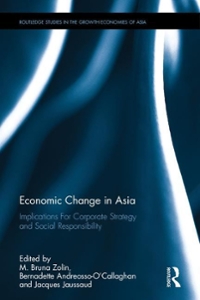Question
1. One country has a comparative advantage over another country in the production of a good if it A. has a curved production possibilities curve
1. One country has a comparative advantage over another country in the production of a good if it
A. has a curved production possibilities curve and the other country has a linear production
possibilities curve.
B. has a linear production possibilities curve and the other country has a curved production
possibilities curve.
C. is a lower opportunity cost producer of the good.
D. has lower fixed costs than the other country.
2. A "voluntary export restraint" is an agreement between
A.government and a particular producer that agrees to limit its exports and, in return, the
government will subsidize the producer.
B.two countries in which the exporting country agrees to limit its exports to the importing
country.
C.two countries in which both countries agree to impose tariffs on the others' products.
D.a and c.
3.Which of the following describes a tariff?
A. an export tax.
B. a tax on import.
C. a limit on the quantity of import.
D. a physical ban on imported goods.
4.A country enjoys an absolute advantage over another country if it
A. uses same amount of resources to produce the same amount of resources.
B. produces less output with the same amount of resources.
C. produce more output with the same amount of resources.
D. uses more resources to produce the same amount of output.
5.Country A limits other nation's exports to Country A to 1,000 tons of coal annually. This is an example of a(n):
A
protective tariff.
B
export subsidy.
C
import quota.
D
voluntary export restriction.
6.If there is no comparative advantage in the production of either of the two goods produced by countries 1 and 2, then
A.
the benefits resulting from trade between the two countries are increased.
B.
there are no gains from specialization and trade between the two countries.
C.
one country must be more productive in producing all goods than the other.
D.
each country should specialize in the production of a particular good.
7.Which of the following is NOT meant for trade restriction?
A.
Tariffs.
B.
Quota.
C.
Export subsidies.
D.
Production subsidies.
8.If the dollar price per pound moves from $1.90 to $1.40, the pound is said to have
_________ and the dollar to have _________.
A.depreciated; appreciated
B.appreciated; appreciated
C.appreciated; depreciated
D.depreciated; depreciated
9.The lower the dollar price per yen, the ______ Japanese goods are for Americans and the
________ Japanese goods American will buy; thus ________ yen will be demanded.
A.more expensive; more; fewer
B.more expensive; fewer; fewer
C.less expensive; more; more
D.less expensive; more; fewer
10.Which of the following is NOT the component of current account?
A.Goods.
B.Services.
C.Incomes.
D.Direct investment.
11.When exports of American goods increase, this __________ the demand for U.S. dollars and at the same time __________ foreign currencies.
A. increases; increases the supply of
B.decreases; increases the supply of
C. increases; decreases the supply of
D. increases; increases the demand for
12.If a Malaysian investor purchased a mill in Laos, this transaction will be recorded in the ___________________ of the Malaysia's Balance of Payments.
A. capital account
B.financial account
C. current account
D goods and services account
Step by Step Solution
There are 3 Steps involved in it
Step: 1

Get Instant Access to Expert-Tailored Solutions
See step-by-step solutions with expert insights and AI powered tools for academic success
Step: 2

Step: 3

Ace Your Homework with AI
Get the answers you need in no time with our AI-driven, step-by-step assistance
Get Started


